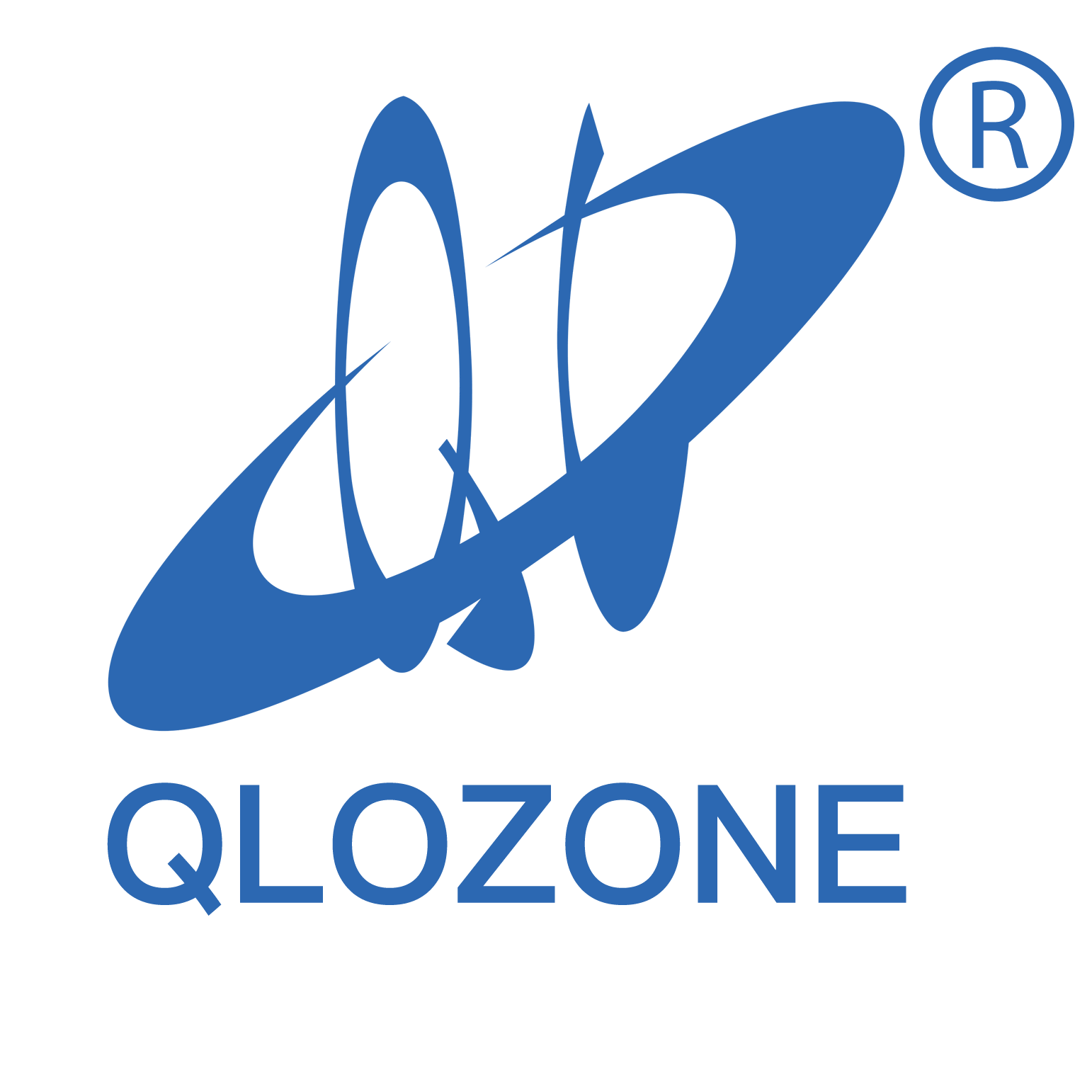บทนำ: เหตุใดการเลือกเทคโนโลยีที่เหมาะสมจึงสำคัญ การฆ่าเชื้อโรค ระบบ เรื่อง
การเลือกเทคโนโลยีการทำให้ปราศจากเชื้อที่เหมาะสมเป็นงานที่สำคัญอย่างยิ่ง เพื่อให้เป็นไปตามมาตรฐานด้านสุขภาพในหลากหลายสภาพแวดล้อม รวมถึงสถานพยาบาล โรงงานผลิตอาหาร และสถานบำบัดน้ำ โดยระบุดังกล่าวมีความสำคัญอย่างมากในการควบคุมโรคติดต่อผ่านการทำความสะอาดพื้นผิว อุปกรณ์ , และดำเนินการกำจัดเชื้อโรคในบริเวณเพื่อกำจัดจุลินทรีย์ก่อโรค ประเภทของการทำให้ปราศจากเชื้อแบบใหม่มีความเหมาะสมแตกต่างกันไปตามสภาพแวดล้อม และจำเป็นต้องเลือกวิธีการทำให้สะอาดที่เหมาะสมตามสภาพแวดล้อมนั้นๆ ตัวอย่างเช่น สถานพยาบาลมีความเสี่ยงสูงต่อการติดเชื้อ จึงต้องใช้มาตรการที่เข้มงวดกว่าสภาพแวดล้อมทางการค้าทั่วไป
การเลือกระบบฆ่าเชื้อสามารถผิดพลาดได้ ส่งผลให้การฆ่าเชื้อไม่มีประสิทธิภาพ พารามิเตอร์ที่ขาดแคลนนี้ก่อให้เกิดความเสี่ยงในการแพร่กระจายของโรค และเป็นภัยคุกคามที่ร้ายแรงต่อสุขภาพและความปลอดภัยของประชาชน โดยตัวอย่างเช่น การฆ่าเชื้อในสถานพยาบาลที่ไม่ดีพอ อาจทำให้เกิดการติดเชื้อที่มีราคาแพงและอาจถึงแก่ชีวิตได้ ดังนั้นเหตุผลสำคัญประการนี้จึงจำเป็นอย่างยิ่งที่จะต้องเข้าใจวิธีการเปรียบเทียบระบบต่าง ๆ ที่มีอยู่ และกำหนดแนวทางการปรับใช้ระบบเหล่านั้นให้เหมาะสมกับเกณฑ์และงานเฉพาะต่าง ๆ
การเข้าใจระบบการทำให้ปราศจากเชื้อที่แตกต่างกัน จะช่วยให้สามารถเลือกระบบที่เหมาะสมกับความต้องการเฉพาะของแต่ละงานได้ โดยต้องพิจารณาให้สมดุลกับเกณฑ์ต่าง ๆ เช่น ประสิทธิภาพในการกำจัดเชื้อโรคเฉพาะเจาะจง การใช้งานง่าย ความเหมาะสมกับโครงสร้างพื้นฐานเดิม รวมถึงความคุ้มค่าโดยรวม เมื่อพิจารณาองค์ประกอบเหล่านี้ บริษัทต่าง ๆ จะสามารถรักษาคุณภาพสุขภาพระดับสูงไว้ได้ ซึ่งจะช่วยสนับสนุนความปลอดภัยของผู้บริหาร และเป็นไปตามข้อกำหนดทางกฎหมายอย่างถูกต้อง ดังนั้น การตัดสินใจจึงไม่ใช่เพียงแค่ทางเลือก แต่เป็นการตัดสินใจเชิงกลยุทธ์เพื่อปกป้องเรื่องสุขภาพของตนเอง
การฆ่าเชื้อด้วยแสง UV ในระบบการทำให้ปราศจากเชื้อ
หลักการทำงานของแสง UV ในการทำให้เชื้อโรคหมดฤทธิ์
แสงอัลตราไวโอเลต (UV) เป็นองค์ประกอบสำคัญของระบบการฆ่าเชื้อที่มีประสิทธิภาพสูงในการทำลายเชื้อโรค โดยมีหลักการทำงานเชื่อว่าเกิดจากการทำลายโครงสร้างดีเอ็นเอหรืออาร์เอ็นเอของจุลินทรีย์ ทำให้มันไม่สามารถทำงานหรือแพร่พันธุ์ได้ วิธีการนี้แสดงถึงศักยภาพในการฆ่าเชื้ออย่างมีประสิทธิภาพ เนื่องจากงานวิจัยชี้ว่า UV สามารถกำจัดจุลินทรีย์ได้มากถึงร้อยละ 99.99 ซึ่งรวมถึงแบคทีเรีย ไวรัส และโปรโตซัว ประสิทธิภาพของการฆ่าเชื้อด้วย UV ขึ้นอยู่กับปัจจัยหลายประการ เช่น เวลาในการให้แสง UV ความเข้มของแสง UV การมีอยู่ของอนุภาคที่เป็นตัวดูดกลืนแสง UV และระดับความทนทานของจุลินทรีย์เอง สำหรับการกำจัดเชื้อโรคที่มีประสิทธิภาพ จำเป็นต้องกำหนดค่าพารามิเตอร์เหล่านี้อย่างแม่นยำ เพื่อป้องกันการฆ่าเชื้อไม่เพียงพอหรือมากเกินไป
ข้อดีและข้อจำกัดของระบบ UV
ระบบฆ่าเชื้อด้วยรังสีอัลตราไวโอเลตมีข้อดีหลายประการที่ทำให้เป็นทางเลือกที่นิยมใช้ในหลากหลายการประยุกต์ใช้งาน ข้อได้เปรียบที่สำคัญคือ การทำงานโดยไม่ใช้สารเคมี จึงเป็นมิตรต่อสิ่งแวดล้อมและปลอดภัยสำหรับผู้ที่อยู่ใกล้พื้นผิว (ซึ่งเป็นเรื่องสำคัญอย่างมากในช่วงเวลาที่มีโรคระบาดโควิด-19) นอกจากนี้ ระบบรังสี UV ยังตอบสนองได้รวดเร็ว และมีความต้องการในการบำรุงรักษาต่ำกว่าวิธีการใช้สารเคมี อย่างไรก็ตาม เทคนิคนี้ก็มีจุดอ่อนของมัน UV อาจไม่มีประสิทธิภาพเมื่อเจอเชื้อโรคบางชนิดที่มีสปอร์ป้องกัน จึงจำเป็นต้องใช้น้ำที่ใสเพื่อให้แสง UV สามารถทำงานได้อย่างมีประสิทธิภาพ อีกทั้งการบำรุงรักษาหลอดไฟและอุปกรณ์ UV อย่างสม่ำเสมอ เป็นสิ่งจำเป็นเพื่อประสิทธิภาพที่ต่อเนื่อง การที่ผู้คนยังคงใช้วิธีนี้กันอย่างแพร่หลาย ก็เป็นเครื่องยืนยันถึงความน่าเชื่อถือและความมีประสิทธิภาพของระบบ เมื่อมีการดูแลรักษาอย่างเหมาะสม
การเปรียบเทียบวิธีการฆ่าเชื้อด้วยสารเคมี
สารละลายคลอรีนสำหรับควบคุมจุลินทรีย์
คลอรีนถูกยอมรับว่าเป็นหนึ่งในสารเคมีที่มีประสิทธิภาพสูงในการฆ่าเชื้อโรคจากจุลชีพหลากหลายชนิด ประสิทธิภาพของผลิตภัณฑ์นี้ทำให้มันได้รับความนิยมในหลายการใช้งาน เช่น ในน้ำดื่มและสระว่ายน้ำ โดยสามารถปรับอัตราการใช้ให้เหมาะสมกับจุลชีพเป้าหมายได้ อย่างไรก็ตาม การเกิดปฏิกิริยาของคลอรีนกับสารอินทรีย์อาจนำไปสู่การสร้างสารประกอบที่อาจเป็นอันตรายได้ ดังนั้นจึงจำเป็นต้องใช้คลอรีนอย่างระมัดระวัง ความคิดเหล่านี้เน้นย้ำถึงความสำคัญของคลอรีนในการควบคุมจุลชีพในสภาพแวดล้อมที่ยังคงมีการถกเถียงกันเรื่องความปลอดภัย
การบำบัดด้วยโอโซนและสารออกซิไดซ์
จากตัวทำให้เกิดการออกซิเดชัน โอโซนเป็นสิ่งที่สำคัญที่สุด เนื่องจากมีพลังในการฆ่าเชื้อจุลินทรีย์ได้อย่างยอดเยี่ยม และไม่มีสารตกค้างทางเคมีตามมา การใช้งานในความเข้มข้นที่ค่อนข้างต่ำ และการรวมตัวของก๊าซกลับเป็นออกซิเจน ทำให้โอโซนเป็นทางเลือกที่เป็นมิตรต่อสิ่งแวดล้อมสำหรับการทำความสะอาด อย่างไรก็ตาม โอโซนก็มีผลเสียเช่นกัน โดยความเป็นปฏิกิริยาของมันอาจก่อให้เกิดอันตรายต่อความปลอดภัยหากใช้ในโดสที่สูง มีมาตรการป้องกันและอุปกรณ์ความปลอดภัยที่จำเป็นต้องพร้อมใช้งานเมื่อใช้โอโซน เพื่อให้เกิดประโยชน์สูงสุดและลดความเสี่ยง
สารประกอบแอมโมเนียมควอเทอร์นารีและสารเคมีทางเลือกอื่น ๆ
ควอทส์ (Quats) หรือสารประกอบแอมโมเนียเชิงสี่ (quaternary ammonium compounds) มักถูกใช้ในสถานพยาบาลและสถานประกอบการด้านอาหาร เนื่องจากมีประสิทธิภาพในการฆ่าเชื้อโรค ควอทส์สามารถกำจัดแบคทีเรียและไวรัสได้อย่างมีประสิทธิภาพ ช่วยส่งเสริมความสะอาดและความปลอดภัยในสถานที่เหล่านั้น แต่ควอทส์ไม่มีประสิทธิภาพมากนักต่อสปอร์ และการใช้น้ำยาฆ่าเชื้ออย่างหนักอาจทำให้เกิดสายพันธุ์แบคทีเรียที่ดื้อต่อยาปฏิชีวนะ ดังนั้นควอทส์ในฐานะทางเลือกของสารเคมีสำหรับการทำความสะอาดเชิงฆ่าเชื้อ จำเป็นต้องมีการตรวจสอบและการควบคุมเพื่อการใช้งานและการกำกับดูแล
ระบบการฆ่าเชื้อด้วยความร้อน
เทคนิคการฆ่าเชื้อด้วยการต้มน้ำและไอน้ำ
บางครั้งสิ่งที่คุณต้องการเพื่อทำลายเชื้อโรคส่วนใหญ่ภายในไม่กี่นาทีคือการใช้น้ำเดือดที่มีอุณหภูมิเกิน 100°C การทำแบบนี้เป็นวิธีที่เรียบง่ายและมีประสิทธิภาพ จึงสามารถนำไปประยุกต์ใช้ได้อย่างง่ายดายสำหรับการควบคุมจุลินทรีย์ในบ้านเรือนและห้องปฏิบัติการ อุปกรณ์ฆ่าเชื้อด้วยไอน้ำ (Steam sterilization) หรือที่เรียกว่า การฆ่าเชื้อด้วยเครื่อง Autoclave มีประสิทธิภาพเหนือกว่าวิธีอื่นๆ โดยสามารถทำลายจุลินทรีย์ที่ดื้อทานต่อการรักษาได้ เนื่องจากใช้ไอน้ำที่มีอุณหภูมิสูงกว่าน้ำเดือด จึงสามารถกำจัดจุลินทรีย์และสปอร์ที่ทนทานได้ "กระบวนการเหล่านี้มีความสำคัญอย่างมากในงานด้านการแพทย์และห้องปฏิบัติการ ซึ่งมักกำหนดให้ใช้การฆ่าเชื้อด้วยไอน้ำเนื่องจากมีประสิทธิภาพและความสม่ำเสมอที่สูง ทั้งสองวิธีนี้ดำเนินการตามหลักเกณฑ์และข้อบังคับที่กำหนดไว้ เพื่อให้สามารถควบคุมจุลินทรีย์ได้อย่างมีประสิทธิภาพสูงสุด และปกป้องสุขภาพของประชาชนในทุกสภาพแวดล้อม
กระบวนการพาสเจอไรเซชันในงานประยุกต์ยุคใหม่
กระบวนการพาสเจอไรเซชันยังคงเป็นส่วนสำคัญของการรับรองความปลอดภัยของอาหารและเครื่องดื่ม โดยเฉพาะในกระบวนการผลิตนมและน้ำผลไม้ ขั้นตอนนี้จะฆ่าเชื้อแบคทีเรียที่เป็นอันตรายโดยการให้ความร้อนกับวัตถุดิบที่ได้รับมาจนถึงอุณหภูมิที่กำหนด โดยไม่ส่งผลกระทบมากเกินไปต่อรสชาติหรือคุณภาพของผลิตภัณฑ์ พาสเจอไรเซชันแบบแฟลชนั้นได้รับความนิยมเนื่องจากประหยัดพลังงานและสามารถรักษาสารอาหารไว้ได้ หน่วยงานกำกับดูแล เช่น อย. (FDA) และ USDA ได้วางมาตรฐานสำหรับกระบวนการพาสเจอไรเซชันที่โรงงานแปรรูปอาหารจำเป็นต้องปฏิบัติตามเพื่อความปลอดภัย ขั้นตอนนี้จัดเป็นแนวทางปฏิบัติด้านความปลอดภัย เพื่อป้องกันการเกิดพิษจากอาหาร เป็นส่วนหนึ่งในการรักษามาตรฐานความปลอดภัยของอาหาร และมีส่วนช่วยในการดำเนินงานของโครงการความปลอดภัยอาหารโลก
วิธีการกรองในระบบกำจัดเชื้อโรค
เทคโนโลยีการกรองด้วยเยื่อ (Membrane Filtration Technologies)
การแยกด้วยเยื่อสามารถเป็นเทคโนโลยีที่ดีกว่าในการกำจัดสารปนเปื้อนที่ปะทะมากับน้ำและอากาศในกระแสของน้ำและอากาศที่มีความบริสุทธิ์สูง โดยใช้กระบวนการไมโครฟิลเตรชันและอัลตราฟิลเตรชัน วิธีการเหล่านี้มีประสิทธิภาพโดยเฉพาะในการกำจัดเชื้อโรค ตะกอน และอนุภาคขนาดใหญ่ เพื่อให้ได้น้ำและอากาศที่มีสุขอนามัยที่ดี ความก้าวหน้าล่าสุดได้เพิ่มประสิทธิภาพและความคุ้มค่าของเทคโนโลยีเหล่านี้อย่างมาก ทำให้เกิดการประยุกต์ใช้งานที่หลากหลาย ตั้งแต่การบำบัดน้ำอุตสาหกรรมไปจนถึงการทำให้อากาศภายในอาคารในครัวเรือนสะอาด ด้วยการพัฒนาอย่างต่อเนื่องในด้านวัสดุและรูปแบบของเยื่อ ทำให้เทคโนโลยีเหล่านี้เสนอแนวทางแก้ไขปัญหาสำหรับความท้าทายในการกรองหลายรูปแบบ
ความสามารถในการดูดซับของคาร์บอนแอคทีเวต
ตัวกรองคาร์บอนกัมมันตรังสีใช้กระบวนการดูดซับเพื่อดักจับสิ่งปนเปื้อนและสารผลพลอยได้จากกระบวนการฆ่าเชื้อ ซึ่งช่วยเพิ่มคุณภาพของน้ำ กระบวนการทำความสะอาดนี้มีประสิทธิภาพสูงในการกำจัดคลอรีนและสิ่งที่ทำให้เกิดกลิ่นไม่พึงประสงค์ในน้ำ รวมถึงปรับปรุงรสชาติของน้ำให้ดีขึ้น การกรองด้วยคาร์บอนกัมมันตรังสีได้แสดงให้เห็นว่าสามารถเสริมประสิทธิภาพให้กับวิธีการกรองอื่น ๆ และเพิ่มประสิทธิผลของการฆ่าเชื้อได้ เป็นเทคโนโลยีเสริมที่เชื่อถือได้สำหรับการผลิตน้ำดื่มที่สะอาดและปลอดภัย โดยเฉพาะในบริบทของอัตราค่าบริการสาธารณูปโภคที่สูงในฟิลิปปินส์ หากเราบรรจุตัวกรองคาร์บอนกัมมันตรังสีเข้าไว้ในอุปกรณ์ฆ่าเชื้อของเรา เราจะสามารถผลิตน้ำที่มีคุณภาพและความปลอดภัยที่ดีขึ้น รวมถึงส่งเสริมสุขภาพที่ดีตามมา
ส่วน FAQ
ทำไมการเลือกระบบฆ่าเชื้อที่เหมาะสมจึงมีความสำคัญ?
การเลือกระบบฆ่าเชื้อที่เหมาะสมมีความสำคัญเนื่องจากช่วยรักษามาตรฐานด้านสุขอนามัย และป้องกันการแพร่กระจายของโรคติดต่อ โดยการตรวจสอบให้มั่นใจว่าพื้นผิวและอุปกรณ์ปราศจากจุลินทรีย์ที่เป็นอันตราย
ระบบฆ่าเชื้อด้วยแสงอัลตราไวโอเลตทำงานอย่างไร?
ระบบกำจัดเชื้อด้วยแสง UV ทำงานโดยใช้แสงอัลตราไวโอเลตทำลายดีเอ็นเอหรืออาร์เอ็นเอของจุลินทรีย์ ทำให้มันไม่สามารถทำงานหรือสืบพันธุ์ได้ จึงขจัดเชื้อโรคได้อย่างมีประสิทธิภาพ
การใช้น้ำยาฆ่าเชื้อเคมีภัณฑ์ เช่น คลอรีนและโอโซนมีข้อดีอย่างไร?
สารฆ่าเชื้อแบบเคมีภัณฑ์ เช่น คลอรีนมีประสิทธิภาพในการกำจัดเชื้อโรคหลากหลายชนิด ในขณะที่โอโซนมีความสามารถในการทำลายจุลินทรีย์ได้ดีโดยไม่เหลือสารตกค้าง จึงเป็นทางเลือกที่เหมาะสมสำหรับความต้องการในการฆ่าเชื้อหลายประเภท
วิธีการกำจัดเชื้อโดยใช้ความร้อนช่วยให้เกิดความปลอดภัยได้อย่างไร?
วิธีการกำจัดเชื้อโดยใช้ความร้อน เช่น การต้มน้ำและการฆ่าเชื้อด้วยไอน้ำ จะช่วยทำลายเชื้อโรคได้อย่างมีประสิทธิภาพด้วยอุณหภูมิที่สูง จึงควบคุมจุลินทรีย์ได้ในสถานที่ที่ต้องปฏิบัติตามมาตรฐานสุขอนามัยอย่างเคร่งครัด

